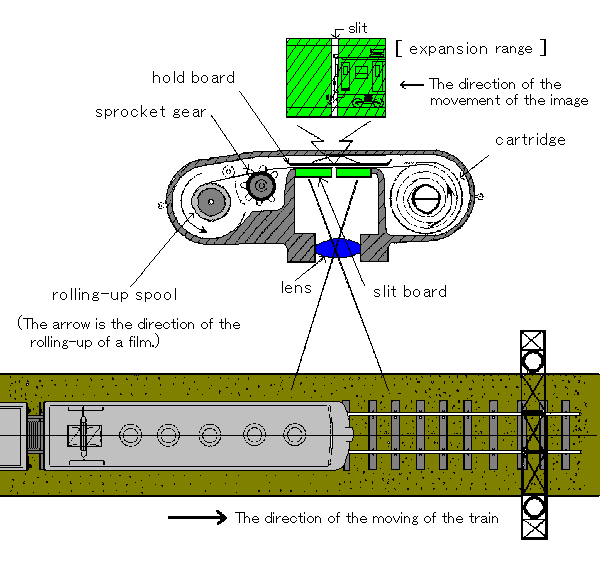

| Slit camera is generally used as the arrival order judgment camera at the racecourse etc. In this homepage, a photograph of the side of railway vehicles is taken using this slit camera. |
| The point that the slit camera differs from a common camera greatly is
that a long and slender crevice called a slit is between a lens and a film. There are two types of slit camera. The first type is the slit camera of the type with which a slit is fixed and a film moves. Other types are the slit camera of the type with which a film does not move but a slit moves. The first type is suitable when taking a photograph of railway vehicles. |
| The structure of the slit camera should look at the following figure. The
point which should be observed here is that the direction to which a film moves and the direction to which a train moves are reverse. |
| The point that the photograph taken by the slit camera differs from a common camera greatly is that the background of having stood it still flows completely. Moreover, when taking a photograph by the slit camera, it is the big feature that a shutter will be in an open state. In other words, at the slit camera, only the subject which agreed with the direction and the movement speed where the film moves is reflected clearly. Therefore, the point of the photography is to adjust the speed of the subject and the movement speed of the film. |
| The move speed of a film is easily calculable in the following formula.
|
The movement speed of the film(mm/second)= The lens focus distance (mm) ÷photography distance(m)× train speed(m/second) |
| For example, when computing by this formula, when taking the train of 90
km / hour separately by 30 meters using the 135 mm lens the photograph, the film movement speed becomes 112.5 mm / second. |
